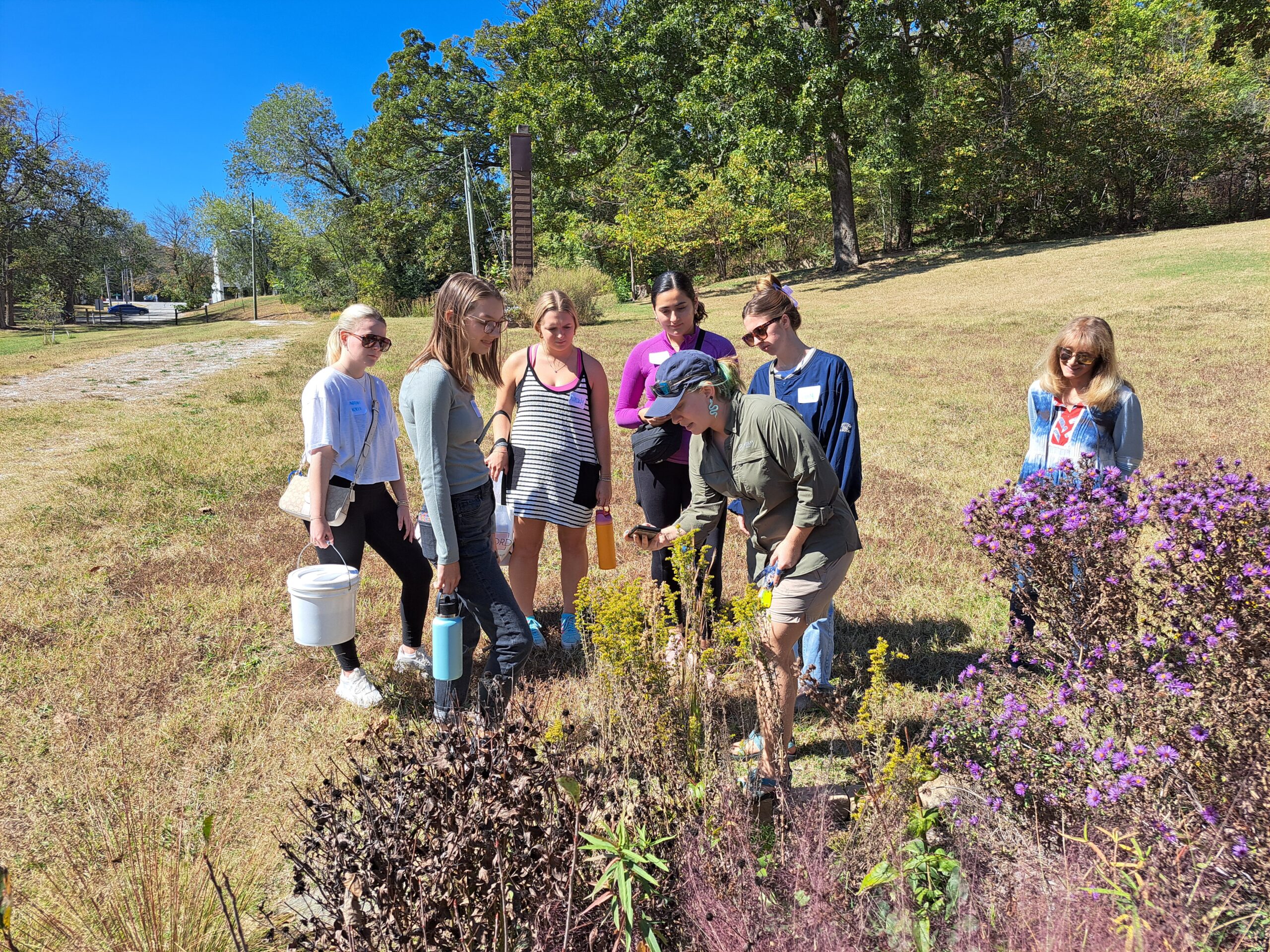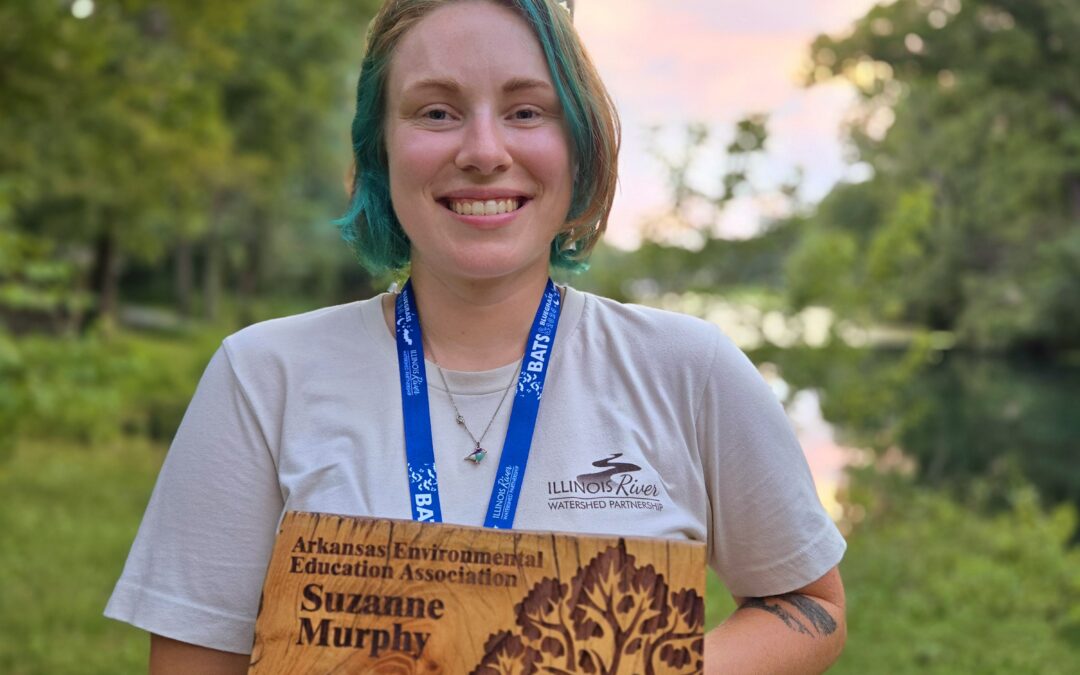by Stephanie R. Lewis
Suzanne Murphy, Illinois River Watershed Partnership (IRWP) Youth Education Specialist, teaches children about the Illinois River watershed and conservation in Northwest Arkansas and Northeast Oklahoma. She says, “Nature doesn’t know what state borders are.”
Illinois River Watershed Partnership’s mission is to improve the integrity of the Illinois River Watershed, an area in Northwest Arkansas and Eastern Oklahoma, through public education, outreach, and the implementation of conservation and restoration practices.
Suzanne was told she could do anything except teach. She thought to herself, “Game on!”
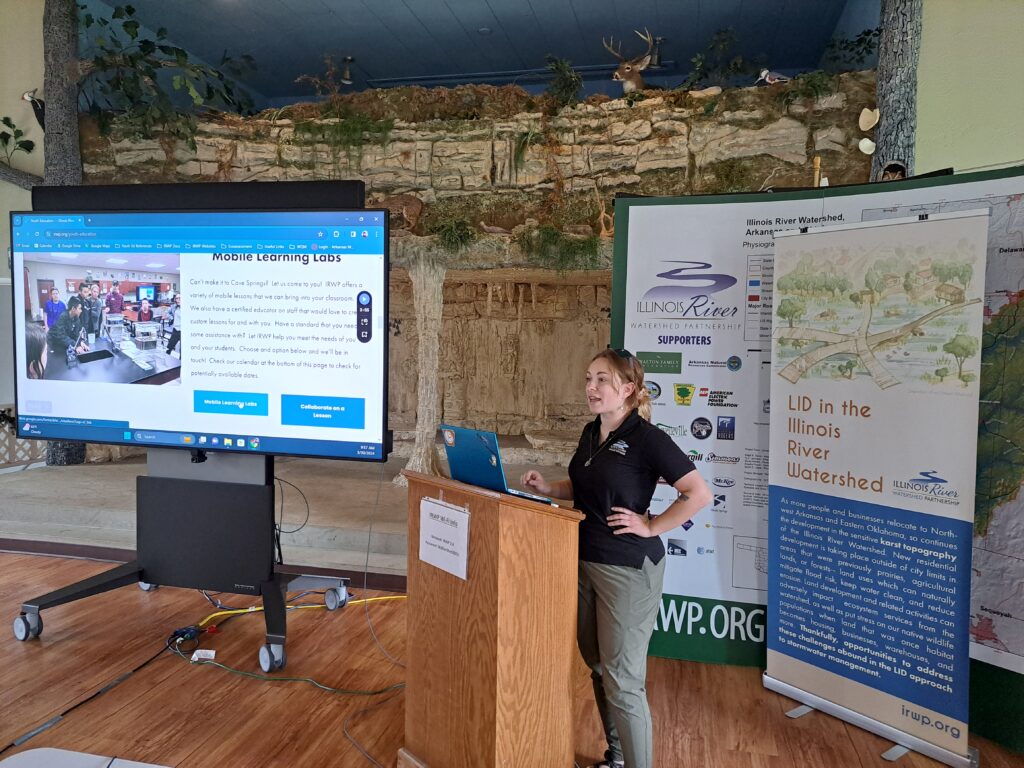
Inspiration
While growing up in Alabama along the Gulf Coast, marine systems and fish prints at Dolphin Island were the things Suzanne spent time with. After moving to Fayetteville, she began learning about karst, a landscape layered by limestone that has been eroded by dissolution, producing ridges, towers, fissures, sinkholes and other characteristic landforms.
Suzanne was a high school science teacher for seven years before she became the Youth Education Specialist at IRWP. With a University of Arkansas degree in environmental science and a minor in physics and education, she taught AP Environmental Science which she says is the class that got her foot in the door of environmental education. To spend time outside, she always planned labs and other activities around that goal. Her students did an IRWP cleanup event with the previous Youth Education Specialist and it was the catalyst for her current role at IRWP.
Favorite Activity
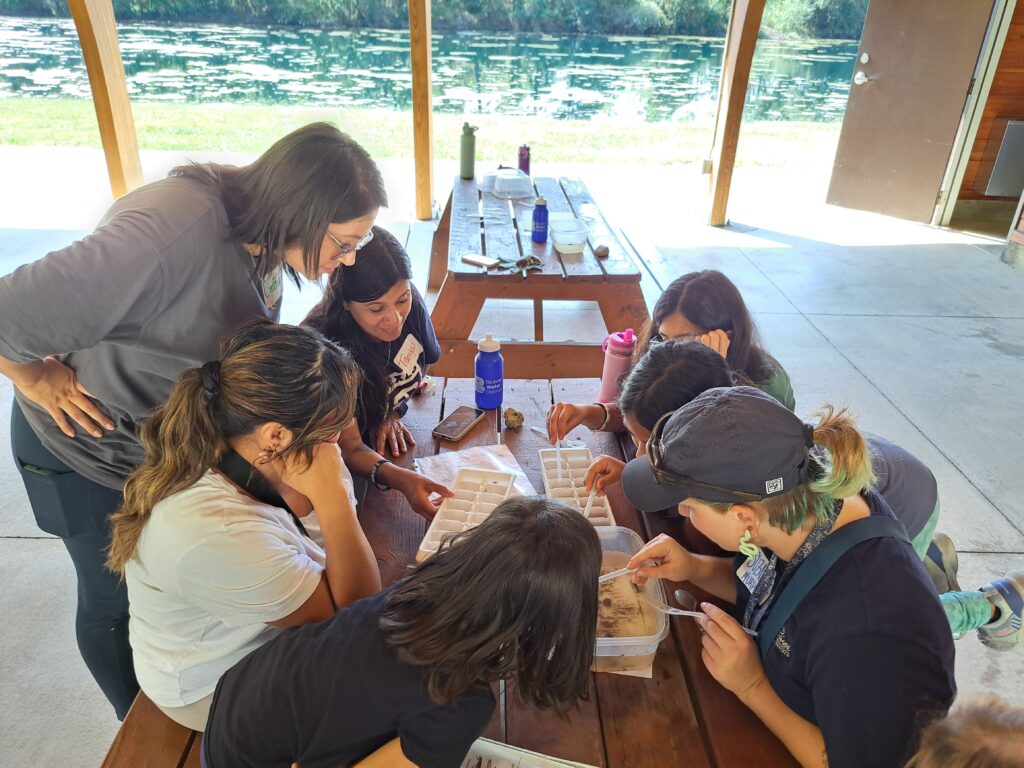
Macroinvertebrate labs is one of Suzannne’s favorite activities. She always takes an opportunity to do a bug kick with the students, then assess macroinvertebrates to estimate water quality. Some call it Kickin’ and Pickin’. It is a fun, enjoyable look into real scientific study, and uses high-level skills to go from identifying bugs they find, to analyzing what the water quality of the stream reach would be. Suzanne does enjoy teaching about groundwater pollution and aquifers, too.
Lesson from Nature
At the beginning of her work on the Illinois River, Suzanne was doing fish surveys with Oklahoma’s Blue Thumb Citizen Science and would always start the nets upstream and move downstream. When escaping, a lot of fish will swim upstream! At least in creeks and rivers. She always thought they would do the opposite to increase their velocity, but that wasn’t the case.
Biggest Challenge of Teaching Outdoors
Suzanne says the weather is the biggest problem, especially when it is a field trip or EcoAssessment season. EcoAssessments are health checkups for the environment. Water and soil are sampled for changes and consistencies.
Favorite Memory
During EcoAssessments, many local Education Accelerated by Service and Technology (EAST) students form teams to be in charge of a site and learn how to monitor water quality. Suzanne had just left her job teaching at Farmington High School (FHS) and she missed her students. Then her former colleague, Coach Scrivner, told her that his EAST team was excited to participate in the EcoAssessment that school year. The team consisted of a mix of new and former students. She says, “It was so good to see my FHS students again and be out in the field with them!”
Advice for Teaching Outdoors

Suzanne suggests checking out local outdoor venues for events. If you don’t know where to start, talk with people who are there. More than likely, they will have favorites. Events and activities can vary, but sometimes you can gain free access to an outdoor space that you would normally pay for, or you pay for the event but typical use of the space is free. IRWP’s “Bats and Bluegrass” event, for example, is a paid fundraiser event with lots of family activities, live music, and good vibes, but daily access to the IRWP sanctuary is free!
Technology & Outdoor Education
Suzanne says she has mixed feelings when it comes to technology and education. She is using it where it’s impactful and going low-tech elsewhere. Technology for water quality monitoring, land use surveys and watershed modeling is awesome.
Creating Inclusive Outdoor Learning
Suzanne took a course through AEEA on Universal Design. It was quite useful in fostering inclusive practices. It’s all about making content and activities thoughtfully from the beginning, so you build in accommodations that any incoming students might need. Suzanne has incorporated a lot of visuals for students who might struggle with English, struggle with auditory learning or if they prefer different learning modalities. She doesn’t receive documents for students’ accommodations, so having labs that are flexible and accessible is important. She says, “Thankfully, my former life as a classroom teacher prepared me on different strategies to use for inclusivity. I am lucky to have received quite a lot of training and to have worked closely with Special Education teachers.”
Connection to the Outdoors
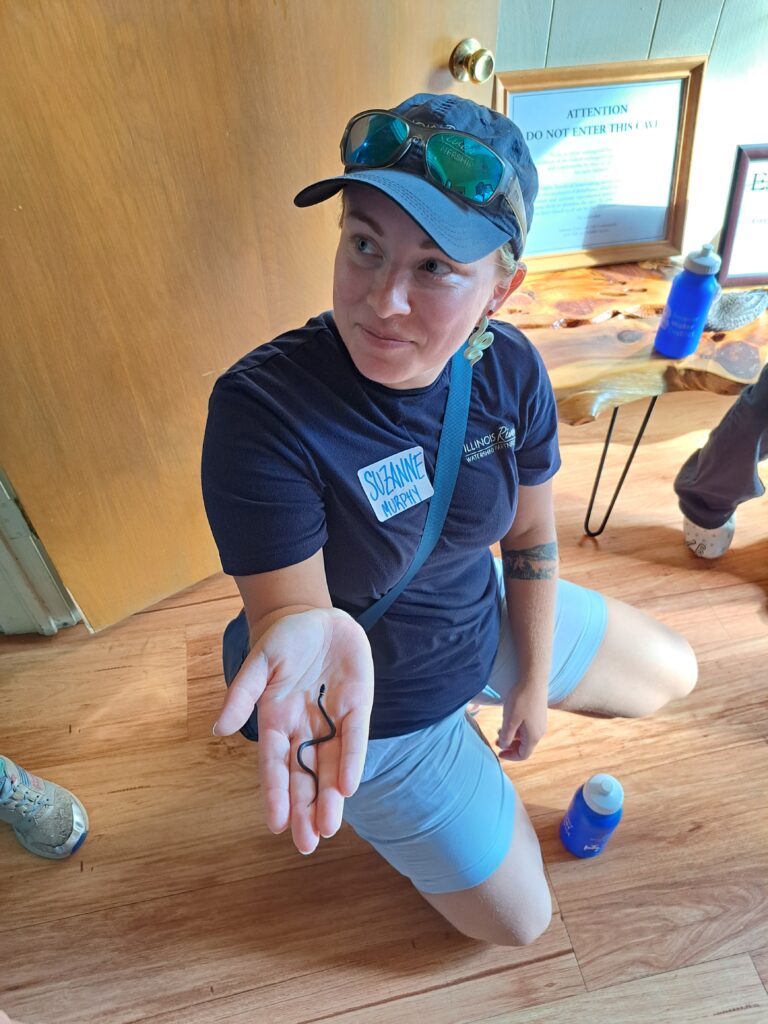
Suzanne grew up in the Mobile Bay area of the Gulf Coast, and the access to marine biology learning experience set the tone for her. “We had estuaries, marshes, bayous, marines – we had everything! Most events and camps in the area that had any kid activities gave you a chance to pet a shark, hunt for crabs or paint dead fish to make fish prints. I always loved being outdoors regardless.” she says.
As she got older and moved around she got more into hiking, paddleboarding, and kayaking.
Career Advice
Suzanne says, “Show. Don’t tell. Your unique ability is to get kids into their local environment, so take advantage. So much [curricula] is taught with a wide lens, and students often don’t see how what they learn is within and [how it] affects the world right in front of them. Don’t just talk about invasive species or macroinvertebrates or erosion – show them.”
If you have trouble finding good examples, talk to other local outdoor educators. Get connected with local organizations and outdoor educators. It’s the same advice she would give classroom educators.
“You’re not alone, so don’t act like it. Design anything on your own that you would like, but It’s amazing to build programs and content with a network.” she says.
Looking Forward
Northwest Arkansas (NWA) outdoor and environmental education is growing. “We’ve always bumped into each other at events and cross-programmed, but we’ve had a few meetings lately (and some planned in the future) that are pointing in the direction of an interconnected education community. There are a few goals we have in mind, including creating a hub for NWA outdoor education and creating a space for classroom educators to make connections with us.” she says.
Suzanne wants to create a network to offer more teacher professional development. She is working on a pilot program with Fayetteville Middle School for themed training for 5th, 6th and 7th grade teachers. “I’ve worked with AEEA on a teacher workshop and I have a few more upcoming events – I’m loving working with these teachers! It’s harder than ever to be a classroom teacher and I really want to pay my debt back to the profession and all the teachers working their butts off out there.”
